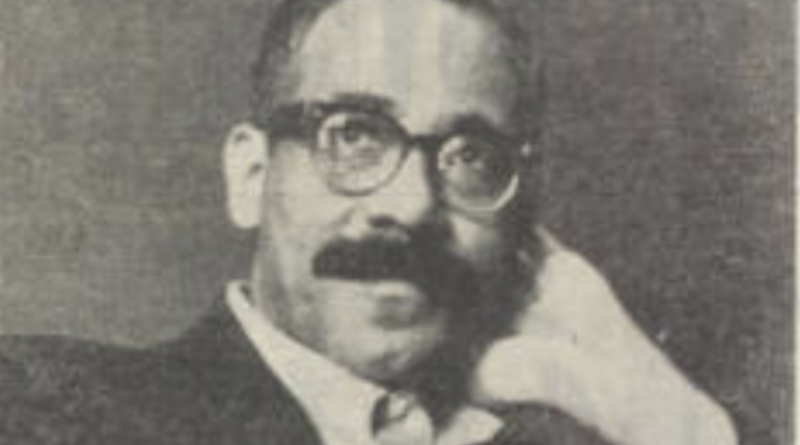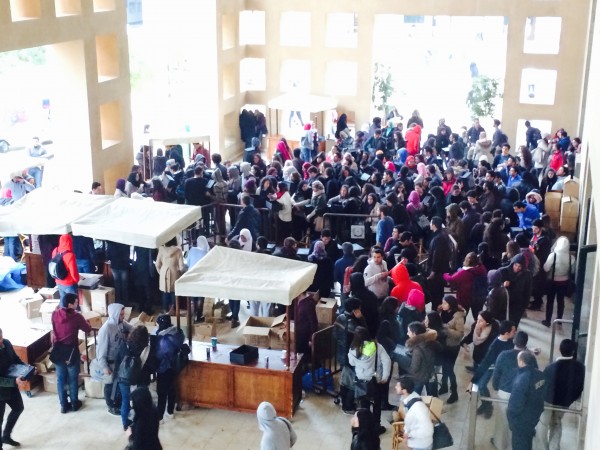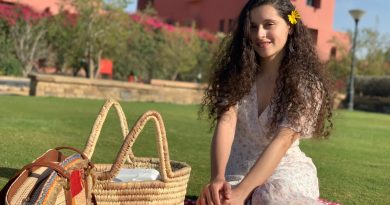Robert Colescott in 1960s Cairo: Art, Race and Place
By: Maya Abouelnasr
@EmEn1125
Photo Courtesy of The Caravan
When American modernist painter Robert Colescott first walked the streets of 1960s Cairo, he embarked on an artistically and racially transformative journey that would inspire many across the span of five decades.
His ethos of diversity and tolerance was celebrated at the opening ceremony of the AUC Arts Department’s The Cairo Years exhibition.
Colescott (1925 – 2009) was the first visiting professor of Art at AUC from 1966 to 1967, during which he was also the curator of AUC’s first exhibition at the Corridor Art Gallery, inaugurated that same year.
The Cairo Years exhibition, running from February 9 to March 31, coincides with Black History Month, which commemorates the achievements of people of African or Caribbean heritage throughout February, as well as recognizing their long struggle for racial justice.
“Robert Colescott was one of a number of Black Americans, particularly in the arts […] who went abroad to explore and define who they were and reflect back on America,” said AUC President Francis J. Ricciardone in his opening remarks.
The exhibition consists of four large mural paintings that Colescott painted while in Cairo and are organized chronologically at the Tahrir Cultural Center’s Margo Veillon Gallery in the AUC Downtown Campus.
Matthew Weseley, an art historian and collector, as well as one of the curators, explained that Colescott first came to Cairo in 1964 while on sabbatical leave from Portland State University in the United States, during which he worked as a researcher at the American Research Center.
During this time, he visited many archaeological sites in Upper Egypt and was inspired by their “African monumentality,” particularly at the Valley of the Queens in Luxor where the wives of the pharaohs were buried.
Weseley noted that prior to Colescott’s arrival in Cairo, his depictions of people of color were sometimes generalized and the features were either effaced or left blank, which spoke to the detachment and neutrality in his art at the time.
In his Cairo paintings, depictions of black people were more symbolic, as they were no longer the effaced figures that he had painted previously, and the narratives in the paintings were more developed.
Though racism was not heavily present in his art until after leaving Cairo, Weseley noted that Colescott’s Cairo paintings that most directly address racism are The Angel of Mercy Carries a Burned Black Body and Nubian Queen.
The Angel of Mercy Carries a Burned Black Body depicts three people around an upside down black body that is hanging from the arm of the person on the far left, which Weseley explained could represent the persistence of violence against black people in the United States.
As for “Nubian Queen”, a white woman is seen looking at a smiling black woman in astonishment, which Weseley said could represent the racial divide between black and white.
Speaking to The Caravan, Weseley advised that attendees take their time inspecting Colescott’s paintings.
“I think that attendees will be struck by the sheer visual power of the paintings on display. The imagery is very effective, but the color is quite brilliant and overwhelming,” Weseley said.
Assistant Professor of Film Terri Ginsberg, who is also one of the curators, remarked that she first became interested in Colescott’s work when she learned about his art through Weseley.
She explained that the inspiration behind this exhibition, first devised around four years ago, mainly stemmed from the discovery that Colescott taught at AUC in the 1960s.
The interest in Colescott’s art also stemmed from finding out about how coming to Cairo helped him embrace his African ancestry, which he had been taught to be ashamed of and hide by his mother, who was more in favor of embracing their non-African ancestry.
“He did mention in at least one letter written from Cairo to a colleague in the U.S. that in Egypt he was able to experience the possibility of assimilating as Black (rather than as white), and that this was liberating for him,” Ginsberg told The Caravan.
At the time of Colescott’s childhood, those who had any African ancestry were immediately referred to as black and endured segregation, such as limited opportunities for upward mobility and inferior living and education.
Ginsberg noted that the transformation of embracing his blackness is reflected in the chronological organization of the paintings in the gallery, with an evident shift from muted tones and abstract figuration to bright colors and more concrete figuration.
She added that it is important to note that Colescott’s art is particularly unique for its time with its personal-political narratives, as artists in the early to mid-1960s seldom tackled the socio-aesthetics of race in the same manner that he did.
The Opening Ceremony of Robert Colescott – The Cairo Years took place at the AUC Downtown Campus’ Tahrir Cultural Center to a limited number of attendees mid-February with COVID-19 precautions implemented, and a livestream of the event was broadcast on YouTube.




